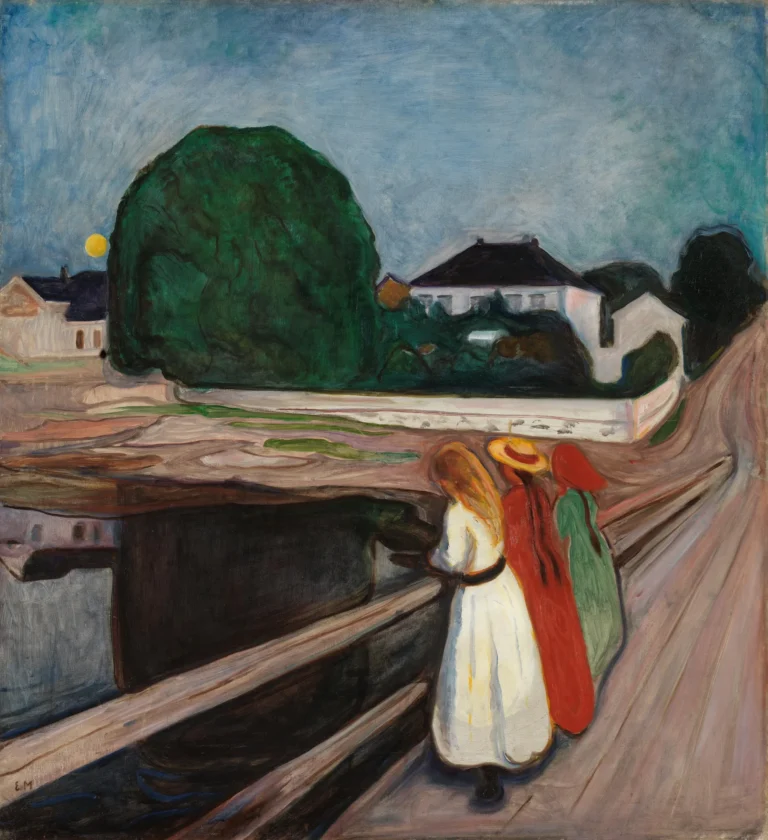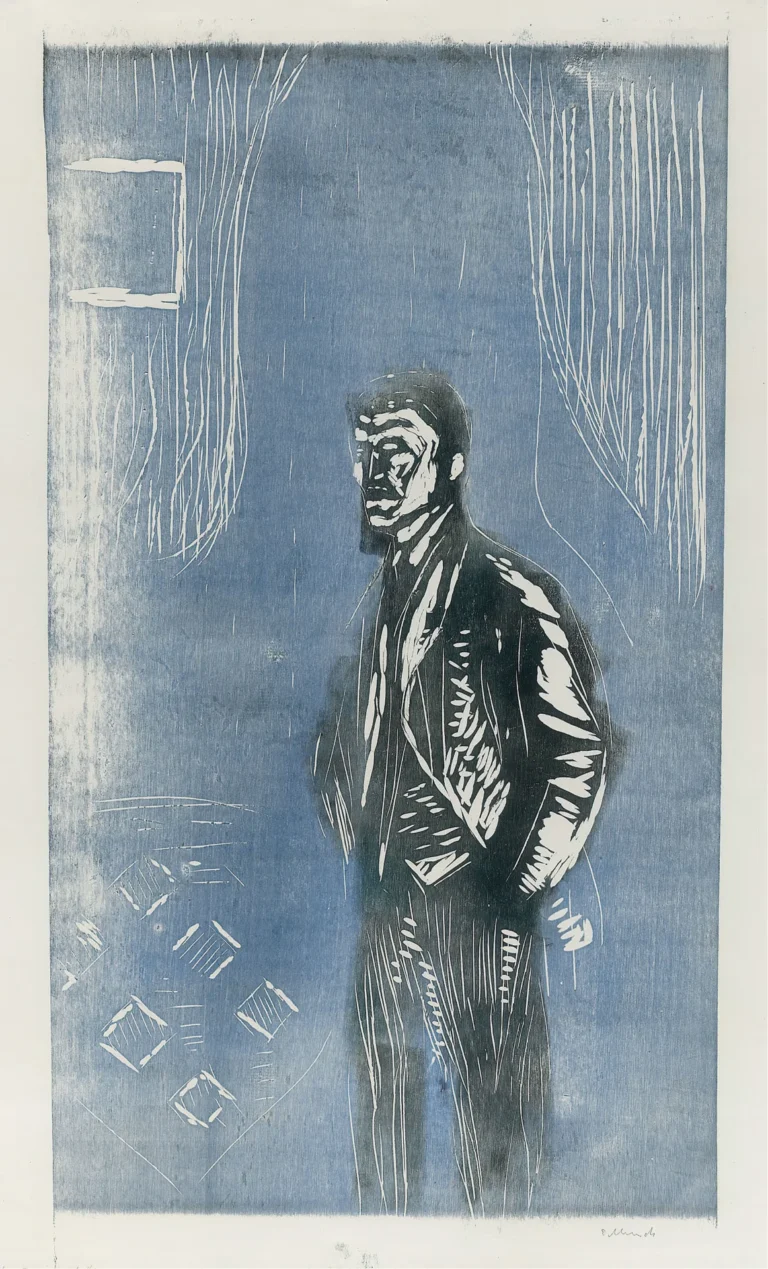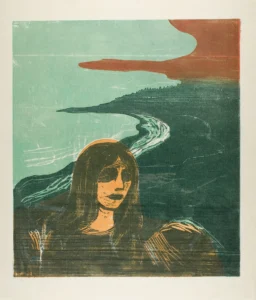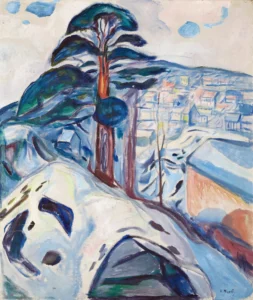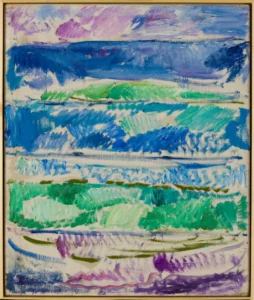The Girls on the Bridge (1901)
Edvard Munch's The Girls on the Bridge is an evocative oil painting created in 1901, measuring 136 by 125.5 cm. It captures a poignant moment of young women on a bridge near Oslo Fjord, dressed in flowing garments. Munch's signature bold colors and dramatic brushwork evoke emotional depth, inviting viewers to delve into the inner lives of the figures. This work forms part of Munch's exploration of human emotion, a significant theme throughout his oeuvre.
Year 1901
About the Artwork
Did You Know
Liked what you see? Add it to your collection.
Enjoyed reading? Share it.
... continued
The Girls on the Bridge by Edvard Munch (1901)
Composition and Style
The painting is an oil on canvas, measuring 136 by 125.5 cm, and is characterized by Munch's distinctive style of bold colors and sweeping curves. This style contributes to a feeling of emotional resonance rather than strict realism.
Subject and Setting
The artwork depicts a scene of young women gathered on a bridge, likely at Aasgaardstrand, a location near Oslo Fjord. The central figures are portrayed in flowing dresses, with one girl prominently placed in the foreground, her back to the viewer, which enhances the air of mystery and introspection. The background includes organic elements such as a tree or hill, a body of water, and simplistic architectural elements that define the rural setting.
Themes and Interpretation
The painting reflects Munch’s thematic interest in human emotion and psychological depth. The use of bold colors and dramatic brushstrokes creates a palpable tension, typical of Munch’s exploration of the human experience. The scene is enigmatic, inviting viewers to ponder the private thoughts and conversations of the figures.
Versions and Significance
Munch was fascinated with this motif and painted different versions of The Girls on the Bridge over a period of almost 30 years, starting from the late 19th century. The 1901 version is one of the earliest and most notable, and it is part of the collection at the National Gallery in Oslo, Norway.
Artistic Technique
Munch's ability to achieve simultaneous separateness and wholeness is evident in this work, where natural elements like trees and grass interact with man-made elements such as the house, fence, and bridge. This interaction creates a polyphonic opposition that is resolved into a consonant pictorial surface, showcasing Munch's extraordinary formal command.





